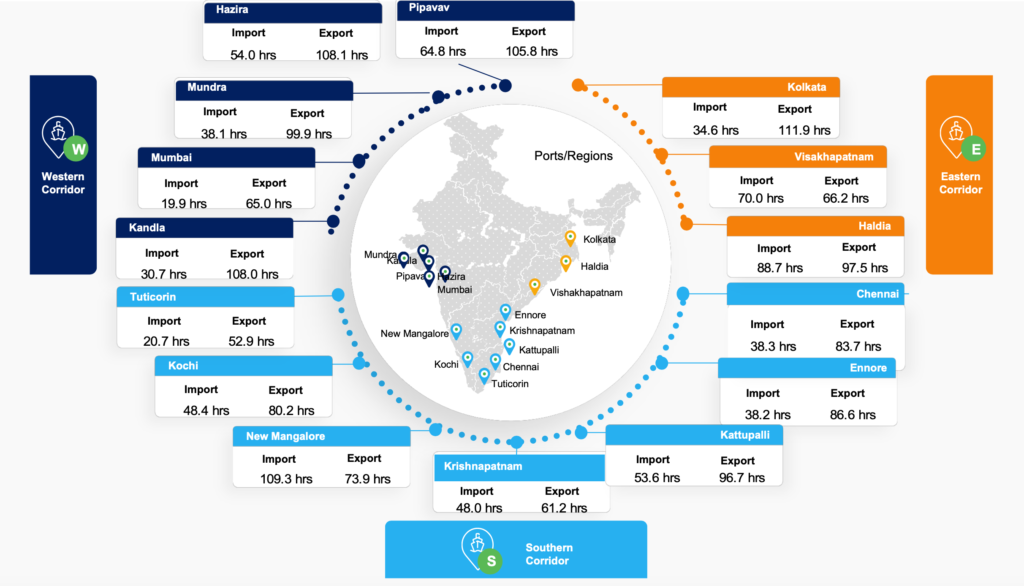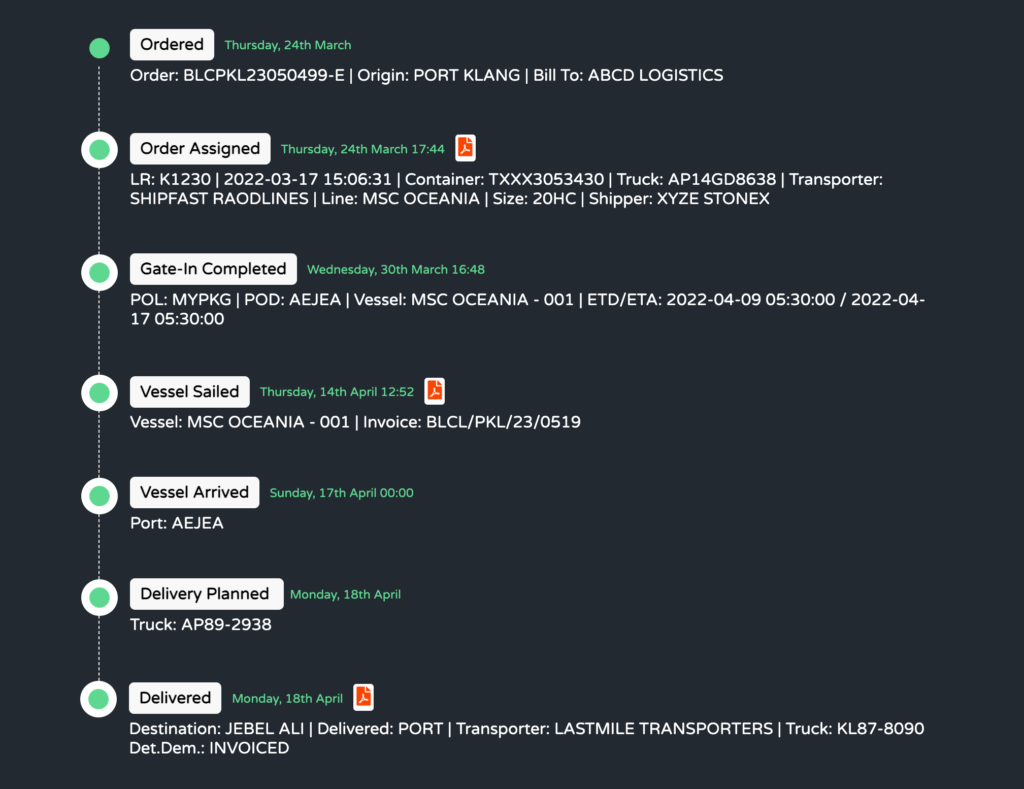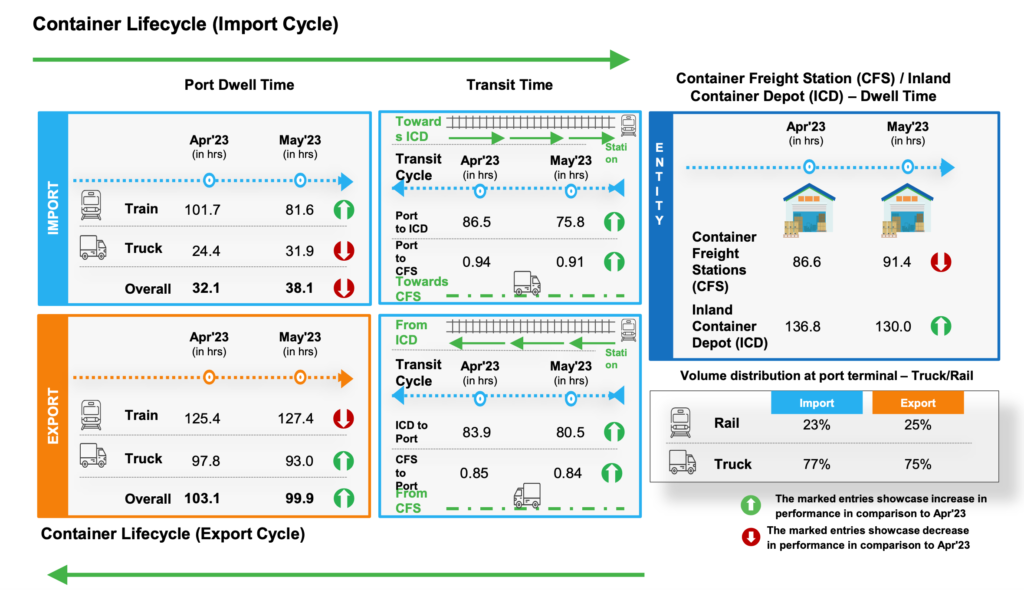As containers and bills of lading (BLs) traverse vast oceans and lands, an invisible wave is brewing beneath the surface – a wave of cutting-edge technologies in container tracking and BL tracking. These days, ocean transportation has been largely automated, with proper systems and better tracking of containers or ships as new technologies are being evolved to track both containers and ships throughout their journey.
Indian Government has come up with National Logistics Data Bank (LDB) with the coverage of all the Indian container terminals, 400 CFS/ICDs, and 100 Toll Plazas in the last 7 years to provide better container movement tracking across India. So far 65 million containers went through under the LDB’s sensors.
Source Credit – LDB Analytics May 23 Report.

Container movement tracking enables forwarders/agents/shippers to track their containers in real time, allowing them to know exactly where their shipments are at all times. This information can be used to optimize routes and reduce delays. LDB can send periodical tracking data to customers’ mobile or email. Such container tracking systems are used by shippers, logistics providers, and consignees to track containers throughout the supply chain. Container tracking systems provide real-time visibility into the location and status of shipments.
Another innovation in ocean transportation is BL (bill of lading) tracking. BL tracking tracks the location of a ship carrying cargo, as well as the status of the cargo itself. Today, there are a variety of different container and BL tracking solutions available on the market. It is important to find a solution that meets the specific needs of your business.
How does Forwarder/Agency utilize these Technologies?
To take advantage of the opportunities presented by new container and BL tracking technologies, companies can implement these solutions which provide data, Some of them are:
EMPTY PICKUP: the empty container was moved out from the terminal or depot by the consignee.
GATEIN FCL: the full and sealed container passed the check-in at the port terminal.
VESSEL LOAD: the container was loaded on the ship.
VESSEL SAIL: vessel carrying the container left the port of loading (POL).
VESSEL ARRIVAL: vessel arrived at the port of discharge (POD).
VESSEL DISCHARGE: the container was discharged from the ship and is waiting to be picked up.
CONSIGNEE PICKUP FCL: the full container is moved out from the bonded area by the consignee.
EMPTY RETURN: the empty and cleaned container is entered into the terminal or depot.
Source Credit: BlueLogis In-Built Tracking Module

Why should a Forwarder/Agency look for Shipment Tracking System?
- Reduced lost or stolen containers
- Improved cargo security
- Enhanced customer service
- Increased efficiency
- Reduction in Demurrage and Detention Costs
According to India’s Mundra Port Terminal, an import container spends 38 hours on average as dwell time and an export container spends 99 hours in the port area.
Source Credit – Mumbai Port Container Spent Hours in Port Area By LDB Analytics May 23 Report.

Implementing a near real-time container and BL tracking can help Forwarders/Agencies optimize their supply chains. With accurate information about estimated arrival times, customers can be kept up-to-date on the status of their shipments. With the help of an intelligent system in place, businesses can now keep track of their shipments with greater accuracy and efficiency.
At last, transparency matters, and trust is built with loyalty!!!